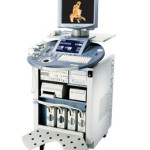Technological advancements in the field of imaging have made ultrasound ownership cost-effective solutions to providing quality patient care in a private practice. The ultrasound market is moving towards solutions that manage patient comfort and safety more effectively. As the ultrasound equipment has become more sophisticated, users have become increasingly specialized and skilled in how to manage the system. Here is a look at the advancements in the industry and trends for the future.

The global ultrasound equipment market is expected to reach US$ 6.2 billion by 2019 at CAGR of 5.1 percent from 2014 to 2019. In 2014, Europe accounted for the largest share of the market, followed by North America. However, the Asia- Pacific market is expected to grow at the highest CAGR of 5.5 percent from 2014 to 2019. This high growth can be attributed to rapidly increasing aging population, growing focus of multinational companies on emerging markets, improving and modernizing healthcare infrastructure, government initiatives to have advanced imaging systems at public healthcare facilities, and high incidences of cancer cases in this region.
Factors such as development of technologically advanced ultrasound devices; rapid growth in aging population with high risk of target diseases; rising incidences of cardiovascular diseases and cancer cases; growing demand for minimally invasive treatment procedures; and increasing public-private funds and grants are driving the growth of the global ultrasound market. However, factors such as technological limitations of ultrasound, dearth of skilled and experienced sonographers, and unfavorable healthcare reforms in US have been hampering the growth of this market.
Major players in the ultrasound market are GE Healthcare, Philips Healthcare, Siemens, Fujifilm SonoSite, Samsung Electronics, Esaote, Mindray Medical, Trivitron, and Toshiba Corporation.

New Systems
The growth of the ultrasound market can be seen in the host of systems released in 2014:
- GE has announced the commercial availability of its Logiq e ultrasound system in the United States. The system features a programmable probe with buttons that allow for simple, fast, precise use of portable ultrasound at the point-of-care. The new transducer allows for premium imaging capabilities in a compact format for patients in a wide variety of settings.
- Phillips has launched its Affiniti ultrasound system at the European Society of Cardiology (ESC) Congress 2014. The intuitive, easy-to-use system meets the needs of physicians who are challenged with treating large volumes of patients. The U.S. launch for Affiniti is slated for 2015.
- In July, Esaote received U.S. Food and Drug Administration (FDA) clearance for MyLab Six, an affordable, compact ultrasound system that improves ergonomics for sonographers scanning in a seated position. It can be configured with a complete suite of applications.
- Samsung Electronics America announced its first premium ultrasound system, the Samsung UGEO WS80A, which received FDA clearance late last year. The system combines imaging innovations and 5-D technologies to deliver fast, easy, accurate ultrasound images for OB/GYN applications.
Developing New Techniques
Ultrasound systems under development are continuing to push the limits of ultrasound use in medicine. For example, a new system developed by researchers at North Carolina State University and the University of North Carolina at Chapel Hill demonstrated the ability to identify arterial plaque that is at a high risk of rupturing and causing heart attack or stroke.
We have developed a dual-frequency intravascular ultrasound transducer, which transmits and receives acoustic signals. Operating on two frequencies allows us to do everything the existing intravascular ultrasound devices can do, but also makes it much easier for us to detect the contrast agents ” or microbubbles ” used for molecular imaging and vasa vasorum detection, said Xiaoning Jiang, Ph.D., an NC State University associate professor of mechanical and aerospace engineering, adjunct professor of biomedical engineering and co-author of the paper.
Researchers hope to launch preclinical studies with the device in the near future.
Other research is showing how ultrasound techniques could be used in areas of medicine commonly dominated by other imaging modalities.
The study, Detection and Impact of Subclinical Coronary and Carotid Atherosclerosis on Cardiovascular Risk Prediction and Reclassification in Asymptomatic U.S. Adults: Insights from the High Risk Plaque Bioimage Study, presented at the American College of Cardiology (ACC) 2014 meeting, demonstrated how a new ultrasonic scanning technique for the carotid arteries revealed who is at high risk of being hit by a blood clot.
Outlook
As the market and demand for ultrasound grows, vendors are finding ways to ensure the systems are efficient in day-to-day practice. One advancement that could be coming to many physician offices in the near future is robotic-assisted ultrasound. Two Mount Sinai research studies published in the August 2014, issue of the Journal of the American College of Cardiology (ACC): Cardiovascular Imaging showed the potential of telerobotic medicine. One study used a computer to perform a robotassisted trans-Atlantic ultrasound examination on a person in Boston, and the other showed that video econsultation, coupled with remote robot-assisted echocardiogram, dramatically reduces the waiting time for a diagnosis faced by heart failure patients in rural communities.
The two studies give us a glimpse of what to expect in the near future, a patient-friendly imaging technology at your doorstep, said Jagat Narula, M.D., Ph.D., senior author of both research studies who serves as Director of the Cardiovascular Imaging Center and Associate Dean of Global Research at Icahn School of Medicine at Mount Sinai.
The researchers said that in the future, on-demand virtual robotic ultrasound could be used in a wide variety of clinical setting collaborations, including in-hospital or emergency room patient imaging studies, community screenings or even within war zones.
Be a part of Elets Collaborative Initiatives. Join Us for Upcoming Events and explore business opportunities. Like us on Facebook , connect with us on LinkedIn and follow us on Twitter , Instagram.













